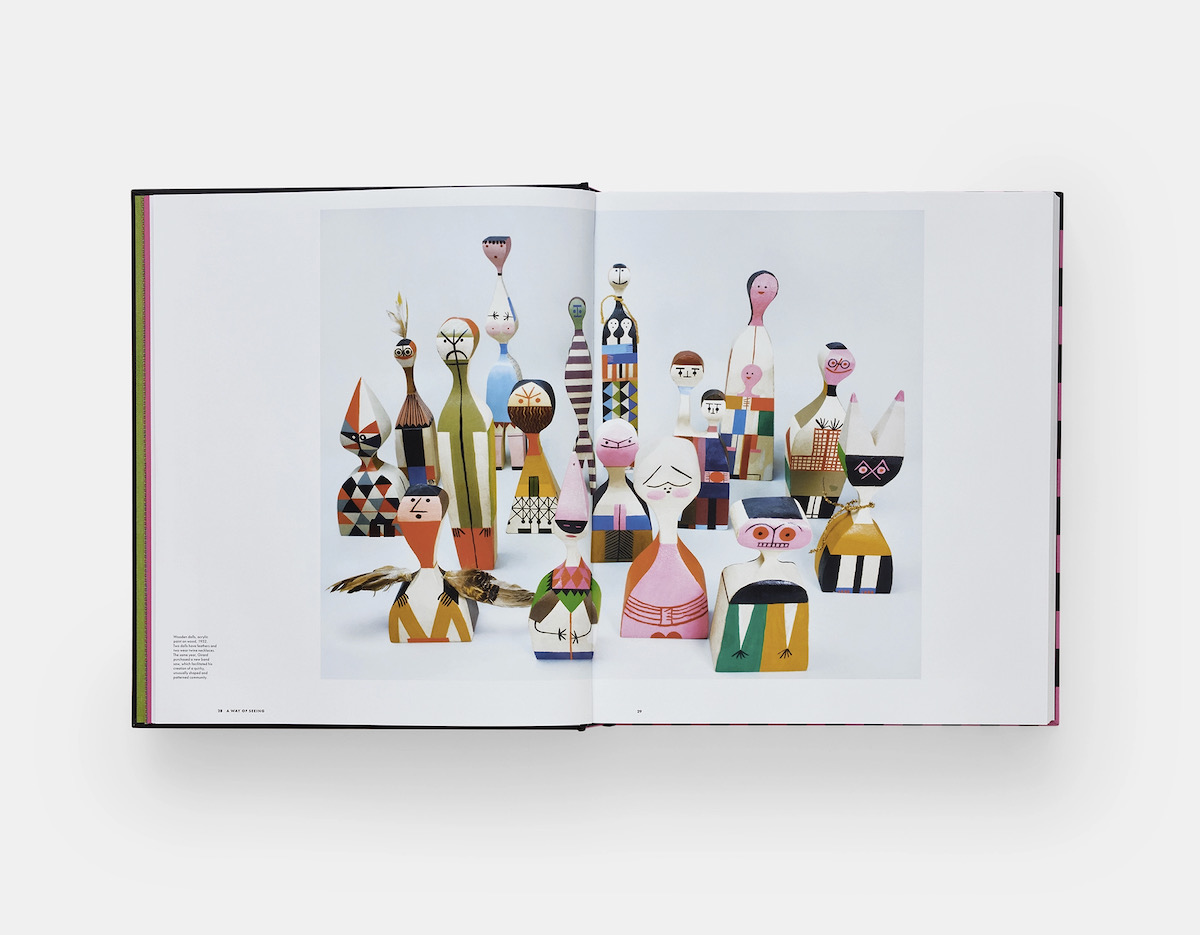If you aren’t familiar with the awesome mid-century American designer Alexander Girard, now is your chance. (And, even if you do know his work, this is an opportunity to find out more.) A new 408-page book by Todd Oldham (president of L-7 Design Studios) and Kiera Coffee (prop stylist and set designer for major brands like IKEA, Target, Guinness, and Architectural Digest) titled Alexander Girard: Let the Sun In, explores Girard’s aesthetic in depth. They include interior and graphic design, his rugs and textiles, his architecture, and more.
As the title of the book suggests, Girard favored bright, vivacious colors. He was born in 1907 in New York to an American mother and a French-Italian father. After living and going to school in Florence and London, he moved to the States. Then, he opened his studio in 1932.
Alexander Girard: Let the Sun In Explores Designer’s Legacy

Oldham and Coffee worked with Girard’s estate to really plumb the depths of his life’s work. Those included (among a great many others) beautifully bright textiles for renowned design firm Herman Miller and a re-design of Branff Airways (dubbed “The End of the Plain Plane”.)
Girard moved to Santa Fe, New Mexico in the 1950s to have “the luxury of not being interrupted.” It was there that he designed some of his most beautiful work and began a large collection of folk-art that inspired him in his architectural practice. The Indian textile designer and activist Pupul Jayakar (quoted in Curbed) said about Girard’s first Santa Fe home: “It is a reflection of a very vigorous and vivid mind — a mind that is capable of contracting and expanding — which sees that it’s not necessary to find an answer but to be. It is a house that is alive.”


Two spreads from the new book, Alexander Girard: Let the Sun In.
Maybe you feel inspired by the works in Let the Sun In to let some brightness into your own home. If that’s the case, a selection of Girard’s furniture, rugs, pillows, and more can be found at Design Within Reach. Another way to get to know him is to visit the Museum of International Folk Art in Santa Fe. He gifted his vast collection of folk art to the museum, and installed much of it in fantastical dioramas. Entitled Multiple Visions: A Common Bond, his permanently displayed dioramas provide insight into Girard’s creative process, and delight visitors in the process.
Story by Stephen Treffinger / Photos courtesy of Phaidon
Subscribe to TABLE Magazine‘s print edition.

